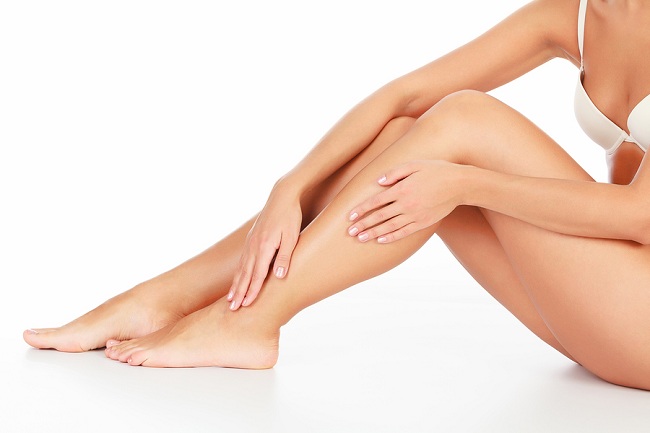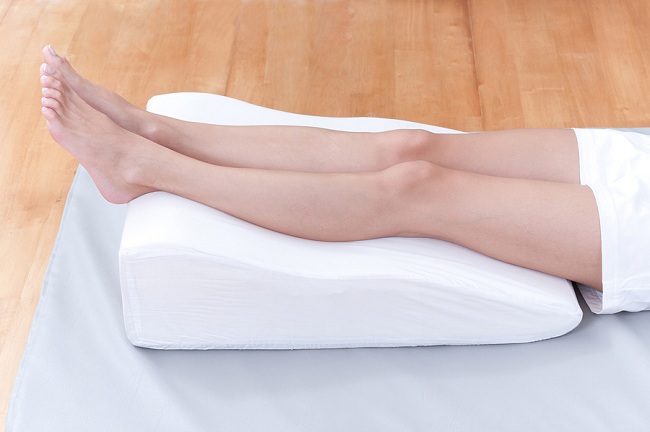- Make It Yourself Lavender Heart-Shaped Bath Bombs!
- 20 Things You Never Knew About “Down There”
- 12 Best Foods For Those Suffering From Arthritis Pain
- 12 Personal Hygiene Mistakes Almost Everyone Makes (Mom Never Told You About #4!)
- 15 Medicinal Plants And Herbs From The Cherokee People
- 12 Mind-Blowing Benefits Of Drinking Coconut Water During Pregnancy
- 12 Outstanding Winter Foods That Won’t Fatten You Up Like A Christmas Turkey
18 Home Remedies for Varicose Veins

Photo credit: bigstock
Think of your body’s circulatory system as a big city freeway structure with fast moving cars (which would be your blood cells) that are making deliveries (oxygen and nutrients) to every single part of your body. Your heart would be the pulse of traffic that pushes the blood cells through your arteries to the various organs and cells within your body.
When the cells return to the heart and lungs, well, sometimes there is something like a traffic jam. If the pressure that the heart is creating slows down or if the veins that are in the legs are having a hard time fighting gravity and getting back up to the heart, this can cause some serious problems.
The veins in the legs contain a special type of one way valve that keeps the blood from returning back to the legs when it should be going to the heart and lungs. These valves have a type of “door” that will close off so the blood will only flow in one direction. But when one of these “doors” fails, the blood leaks back down and begin to form a pool. This generally happens in the calves. The pressure from these pools of blood causes the walls of your veins to bulge out and become misshapen. Once this happens, the veins show through the surface of the skin and appear to be bumpy or knotty or knarled and look either purplish or dark blue in color.
If those swollen veins were nothing more than a cosmetic problem they might not be of much concern, however, those veins cause many people aching, throbbing, swelling of the ankle, or a burning, even itching type of pain that cause many to seek relief. In some instances, varicose veins are a sign of a more serious problem which could indicate blood clots. If you should find that your varicose vein(s) suddenly develop swelling of the leg and/or sores or ulcers around the ankle, you should seek medical help immediately. Although blood clots are rare, they do happen.
Approximately 10 percent of men and 25 percent of women will be affected by varicose veins. Although there are medical and surgical options to remove them or deflate them, there are plenty of natural remedies to help prevent them from happening or at the very least, decrease their severity and the painful discomfort they can cause.
Check out our list of the top 18 ways you can prevent this problem or find some relief from the irritating pain.
1. Take a look at your family tree
This problem tends to run in families, although the exact reason for this isn’t really known. It’s thought that there is possibly a type of weakness in the gene that is control in the development of the veins of the legs. If you find that varicose veins run in your family, the sooner you follow preventative measures the better your chances that you can avoid, or at least delay, the development of varicose veins.
2. Think twice about the effects of estrogen
Estrogen is thought to have a detrimental effect on the connective tissue and the collagen that makes up the veins. If you find you have a family history of varicose veins, you might want to think twice about taking oral contraceptives or hormone replacement therapy. Talk to your doctor about your family’s medical history of varicose veins and the possible side effects that estrogen might create. Although estrogen might not have direct effect on causing varicose veins, the hormone does increase the risk of blood clots.
3. Get moving
Although exercise won’t prevent varicose veins, doctors will tell you that exercise can improve circulation, which will prevent blood from pooling in your lower legs. As you move, muscles in your lower legs contract and push blood through your veins, back to your heart. Read more about the most vital exercises you can do.
4. Slip into some spandex
Pants that are made from spandex apply pressure to the legs and may provide some much needed support. Just be sure that these pants aren’t so tight that they cut into the skin and restrict circulation.
5. Do leg exercises
Almost anything that gets you to use your legs will work, from walking to riding a bike, aerobics to dance classes, using a stair machine to just climbing the stairs to your office, anything that gets your legs moving can help improve the muscles that will push the blood back up to your heart and keep the blood from pooling in your calves.
6. Lose weight
Being overweight puts stress on almost every part of the body but it also tends to make people less active, which mean your legs aren’t moving as much. Persons who are overweight can’t usually pump blood from their legs back to their heart as efficiently. Also, being overweight means that your blood vessels have more blood in them, which puts even more stress and strain on the blood vessels themselves. Do your varicose veins a favor and keep your weight in check. Find out how to lose weight with green tea diet.
7. Take a break from standing
When you stand in one place for long periods of time, the blood in your legs must not only make that uphill trek to your heart, but they must do so without the help of the contraction of your leg muscles. It’s almost that going up the creek with no paddle thing. This causes blood to pool in your lower legs, which can lead to those ugly varicose veins. If at all possible, take breaks to walk around or to sit with your feet up for short periods of time. If you can’t walk away or sit down, at least shift your weight from one leg to the other or stretch up on your tiptoes.
8. Eat a balanced diet
Besides maintaining a reasonable weight, a balanced diet will give you the nutrients that can prevent varicose veins. Both protein and vitamin C are compounds of collagen that make up the tissue of the veins and valves. If the collagen in your body is in good shape, then the tissues of the veins will remain strong and resilient. Don’t forget that while a healthy diet can strengthen the tissues of the veins, they won’t “cure” varicose veins after they have started.
Continue to Page 2

Photo credit: bigstock
9. Prop up your feet
Putting your feet up feels so good, but putting them above the level of your heart is even better. Make gravity work for you, for a change! So lie on the couch and put your feet up on the arm or put 3 or 4 pillows under them and allow gravity to push that blood back to your heart.
10. But don’t sit too long
Some experts say that sitting for long periods of time can cause varicose veins. It’s thought that those bent knees and hips slow the return of blood to your heart. So if you sit all day at work, or if you are on a long car ride or plane ride, get up and stretch your legs at least once an hour.
11. And don’t be cross
Your legs, we mean. Sitting with your legs crossed for long periods also slows the circulation to and from your legs.
12. Flex your feet
Contracting your leg muscles help prevent varicose veins, but so does exercising the muscles in your feet. This helps to force the blood up and out of the veins. Try pumping your food up and down, such as when you are pressing on the gas pedal of a car, or rotate your feet by moving them both clockwise and then counterclockwise.
13. Sleep with your feet elevated
If you have chronic swelling of your ankles or lower legs, try putting a few pillows under your feet or lower legs while you are sleeping.
SEE ALSO: Exercises For Rheumatoid Arthritis Infographic
14. Keep it loose
Your clothes, we mean. Don’t wear pants or other clothing that is tight at the waist or crotch. They can act like tourniquets that can cut off or seriously restrict the blood flow that is coming from your legs.
15. Consider some support
Check at your pharmacy or ask your doctor about special compression stockings that are specially designed to improve circulation in the legs.
16. Check your seat
If you must sit for long periods, don’t use a chair with seat that is too long or too deep for your legs. The front edge of the chair seat will dig into the back of your knees and compress the blood vessels.
17. Change your shoes
Shoes with lower heels make your calf muscles work harder, which means they pump more blood away from your legs and back to your heart. Wear tennis shoes more often, especially if your feet or ankles swell frequently.
18. Cover ups
If you have stopped wearing shorts or skirts because you are embarrassed about your unsightly varicose veins, then how about making them disappear with products that cover up those blue lines. There are numerous brands of creams in various shades to match your skin type and cover up those veins. Some brands are waterproof and even have an SPF of 15. Although creams won’t fix or cure your varicose veins, at least they will help you forget about them for a while.
Sources:
(By the way, if you’re enjoying this article, you may want to subscribe to the Naturalon’s free newsletter; get breaking news alerts on GMO’s, fluoride, superfoods, natural cures and more… You privacy is protected. Unsubscribe at any time.)
































Usa Vein Clinics
Dec 26, 2017 at 8:44 am
Marvellous! I like the ways which you have shared for varicose vein prevention. Thanks for sharing this informative post.